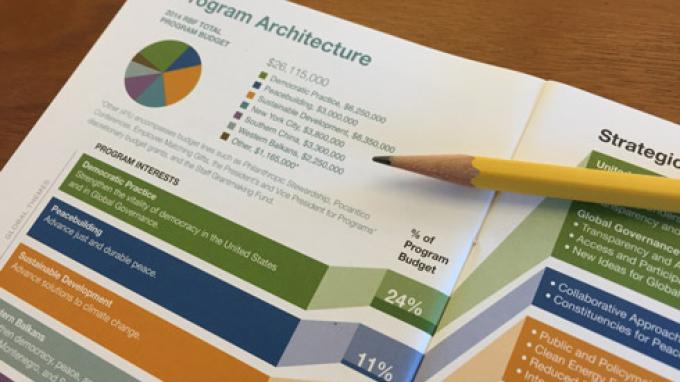

In 2003, the Fund redesigned its program architecture, reorganizing its grantmaking into program themes and pivotal places.
In 2001-2003, for the first time since the 1983 adoption of the One World program rubric, the RBF undertook a comprehensive redesign of its program architecture. The new architecture, still in place in 2015, has two overlapping dimensions: program themes and geographic areas, called “pivotal places.” This redesign was intended to tighten the Fund’s work, following RBF President Stephen Heintz’s assessment that it had become overly diffuse and scattered. Gradually, throughout the 2000s, the Fund honed in on three themes: Democratic Practice, Peacebuilding, and Sustainable Development; as well as two pivotal places: Southern China and the Western Balkans. All were drawn from the Fund’s historical involvements and reinforced its core values. Pivotal places were selected in part for their capacity to benefit from cross-program collaborations, and in part because they offer the potential to generate lessons and innovations of significance to their immediate regions and beyond. The term “pivotal places” was inspired by Paul Kennedy’s 1996 Foreign Affairs article describing certain states as especially capable of influencing neighboring states and world geopolitics. The 2003 architecture was developed from the board and staff’s assessments of the challenges facing today’s increasingly interdependent world.
Browse the major events in the Rockefeller Brothers Fund's history